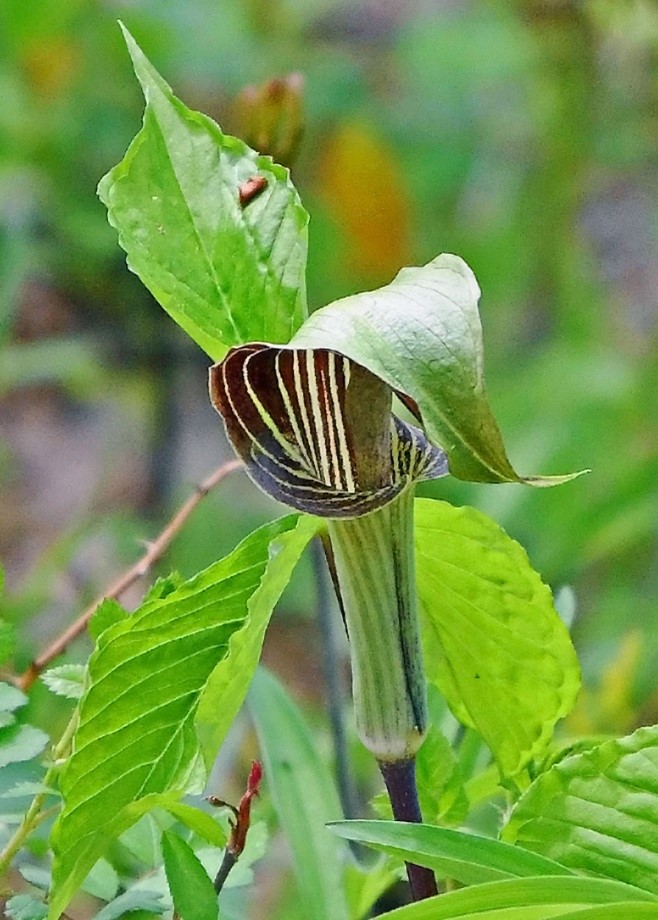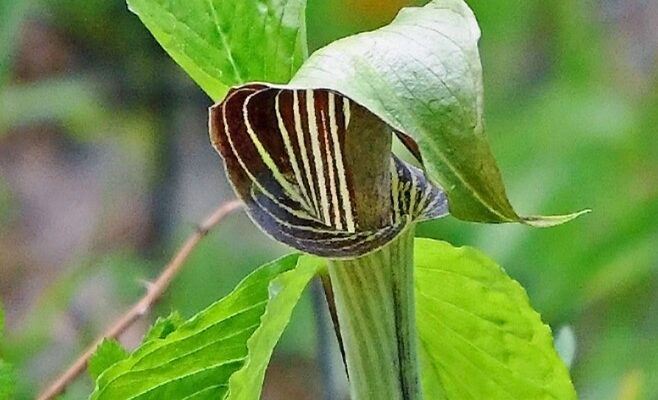Rural Perspectives
Preaching the word about Jack-in-the-pulpit
by Diane Constable

A Jack-in-the-pulpit has one or two leaves. The hooded part of the plant forms the “pulpit” and has white or purplish strips. Photo credit: Diane Constable
If you walk through our wet woodlands this spring, you may find a neat, green wildflower called Jack-in-the-pulpit (Arisaema tripyhllum), which gets its name because it looks like a minister preaching in a pulpit. Other names for it are Indian turnip and brown dragon.
The hooded part of the plant (the spathe) forms the “pulpit” and has white or purplish strips. The tiny flowers, or pollen, (the spadix) are on a spike under the pulpit, and they represent “Jack.”
A Jack-in-the-pulpit has one or two leaves, with each leaf having three leaflets. A single-leaf plant indicates the plant produces pollen only; those with two leaves will have flowers. The plant will produce a cluster of bright red berries in the fall. It can grow 8 to 24 inches tall and can live 25+ years.
Flies and other small insects are attracted to the slight odor of decay the plant produces. They act as pollinators by carrying the pollen on their feet and wings from plant to plant.
This plant is toxic to eat unless properly cooked and can burn the skin. Few animals eat it, but turkeys and some birds eat the berries, and bears will dig up the small roots in the spring.
Fun Fact: The plant usually starts off as a pollen maker, but if the nutrients are abundant, it will change to a flower producer and then change back again if conditions turn unfavorable.
 Diane Constable is an avid photographer. She serves on the Unadilla Township Planning Commission and is a member of the township’s Parks and Recreation Committee. Diane also enjoys her dogs and gardening.
Diane Constable is an avid photographer. She serves on the Unadilla Township Planning Commission and is a member of the township’s Parks and Recreation Committee. Diane also enjoys her dogs and gardening.

